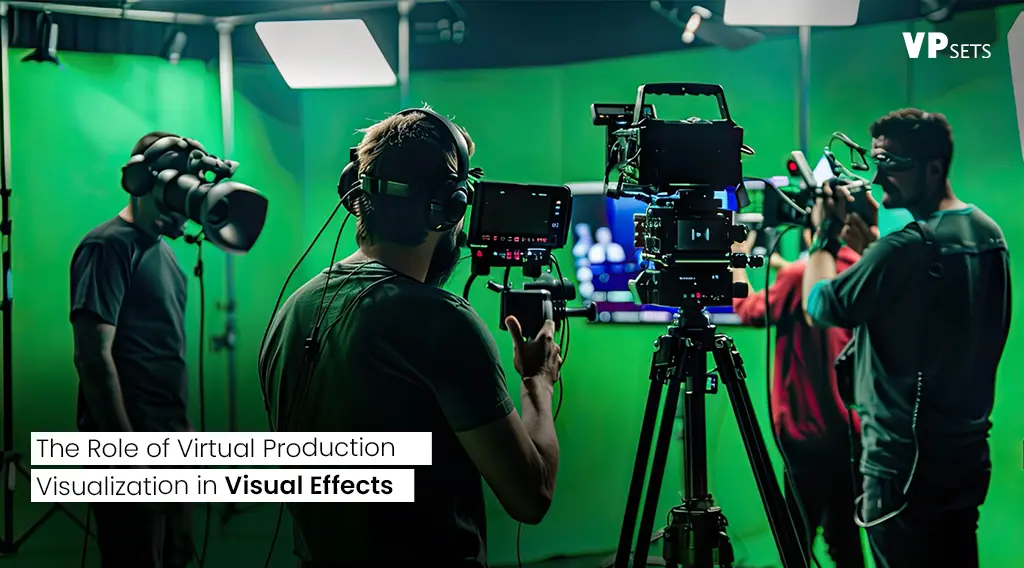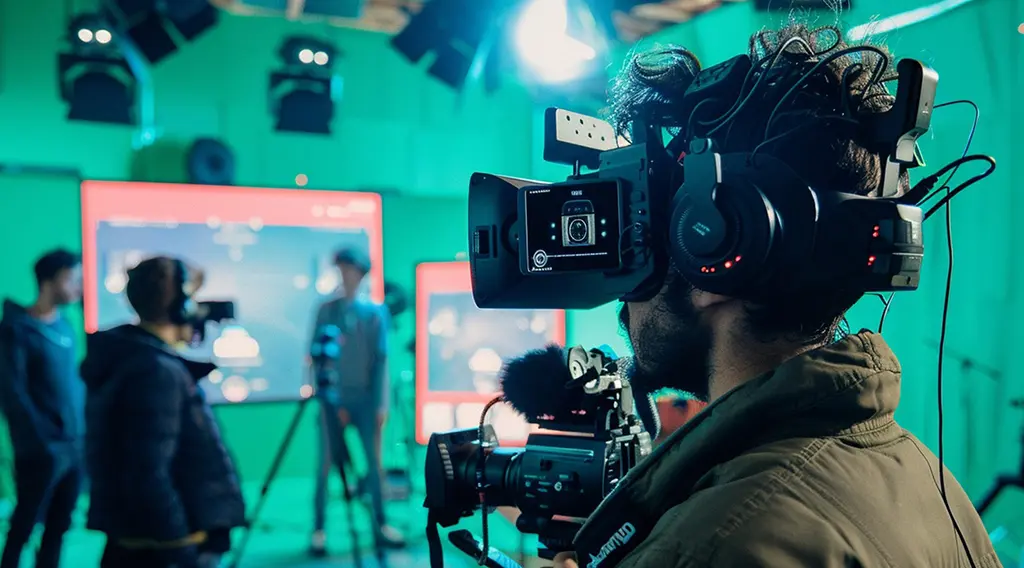Virtual Production Tool Set and Technologies Redefining Cinema

Virtual production (VP) visualization is the process of creating real-time, interactive virtual environments that filmmakers can use to visualize and manipulate scenes during production.
It combines computer-generated imagery (CGI), real-time rendering, and motion capture to create immersive environments that directors, cinematographers, and other crew members can interact with as if they were on a physical set.
This technology allows for the integration of live-action footage with computer-generated elements in real-time, enabling filmmakers to see the final look of a scene while shooting. This real-time feedback loop is a game-changer, offering unprecedented creative control and efficiency.
At the forefront of this revolution is VP Sets , the world's first marketplace for virtual production assets by Digikore Studios, offering a comprehensive platform for filmmakers to access cutting-edge tools and resources.
In this blog, we will explore the role of virtual production visualization in visual effects, its benefits, and its impact on the industry.
The Role of Virtual Production Visualization in Visual Effects
The world of visual effects (VFX) is ever-evolving, driven by the relentless pursuit of more realistic and captivating visual storytelling. One of the most groundbreaking advancements in recent years is virtual production visualization. This technology has revolutionized how films, television shows, and commercials are made, merging the physical and digital realms to create seamless, visually stunning experiences.
The Evolution of Virtual Production
The roots of virtual production can be traced back to the early days of CGI and motion capture. However, it wasn't until the advent of powerful real-time rendering engines like Unreal Engine and advancements in motion capture technology that VP visualization became a viable tool for mainstream filmmaking.
One of the most notable early adopters of virtual production was James Cameron, who used it extensively in "Avatar." The film's groundbreaking use of motion capture and real-time rendering set a new standard for what could be achieved with VP. Since then, the technology has continued to evolve, becoming more accessible and versatile.
Key Components of Virtual Production Visualization
Several key components make virtual production visualization possible:
1. Real-Time Rendering Engines:
Software like Unreal Engine and Unity are at the heart of virtual
production. These engines can render complex scenes in real-time, allowing filmmakers to see the final look of a
shot while it's being filmed.
2. Motion Capture:
Motion capture technology captures the movements of actors and translates
them into digital characters. This is crucial for creating realistic CGI characters and integrating them seamlessly
with live-action footage.
3. LED Volumes:
LED walls and volumes are large, high-resolution screens that display virtual
environments in real-time. They provide dynamic lighting and reflections, enhancing the realism of the scene and
allowing actors to perform in a more immersive setting.
4. Virtual Cameras:
Virtual cameras allow filmmakers to "shoot" scenes within a virtual environment.
These cameras can be manipulated just like physical cameras, offering the same creative control over framing,
movement, and focus.
Benefits of Virtual Production Visualization

The adoption of virtual production visualization offers numerous benefits to the filmmaking process:
1. Creative Freedom:
Directors and cinematographers have unprecedented control over the visual aspects
of a scene. They can experiment with different angles, lighting conditions, and set designs without the limitations
of physical sets.
2. Cost Efficiency:
Building physical sets and travelling to remote locations can be expensive and time-consuming.
Virtual production allows filmmakers to create and modify sets digitally, reducing costs and production time.
3. Enhanced Collaboration:
Virtual production facilitates collaboration between different departments.
Visual effects artists, set designers, and camera operators can work together in real-time, ensuring that
everyone is on the same page and reducing the risk of miscommunication.
4. Real-Time Feedback:
One of the most significant advantages of virtual production is the ability to see the
final look of a scene during filming. This real-time feedback allows for quick adjustments and ensures that the
creative vision is maintained throughout the production process.
5. Improved Actor Performance:
Acting against green screens can be challenging for performers. LED volumes and
virtual environments provide actors with a more immersive setting, leading to more natural and convincing
performances.
The Future of Virtual Production Visualization
As technology continues to advance, the future of virtual production visualization looks incredibly promising. Several trends and developments are likely to shape the industry in the coming years:
1. Increased Accessibility:
As the cost of real-time rendering engines and motion capture technology decreases,
virtual production will become more accessible to independent filmmakers and smaller studios. This democratization
of technology will lead to a broader range of creative projects.
2. Integration with AI:
Artificial intelligence (AI) and machine learning will play a significant role in the
future of virtual production. AI can assist with tasks such as motion capture cleanup, real-time character animation,
and even scene composition, further streamlining the production process.
3. Advancements in Hardware:
Continued advancements in hardware, such as more powerful GPUs and higher-resolution
LED panels, will enhance the realism and capabilities of virtual production. This will enable filmmakers to create
even more detailed and immersive virtual environments.
4. Cross-Industry Applications:
Beyond film and television, virtual production visualization has applications
in other industries such as video games, architecture, and virtual reality (VR). These industries will benefit
from the same real-time feedback and creative control that virtual production offers to filmmakers.
Conclusion
Virtual production visualization is transforming the visual effects landscape, offering filmmakers unparalleled creative freedom, efficiency, and collaboration. As the technology continues to evolve, it will undoubtedly shape the future of visual storytelling, enabling creators to bring their most ambitious visions to life.
VP Sets, as the world's first marketplace for virtual production assets , is at the forefront of this revolution, providing the tools and resources needed to harness the full potential of virtual production. Whether you're a seasoned filmmaker or an aspiring creator, the possibilities of virtual production visualization are limitless, promising a new era of cinematic innovation and excellence.
